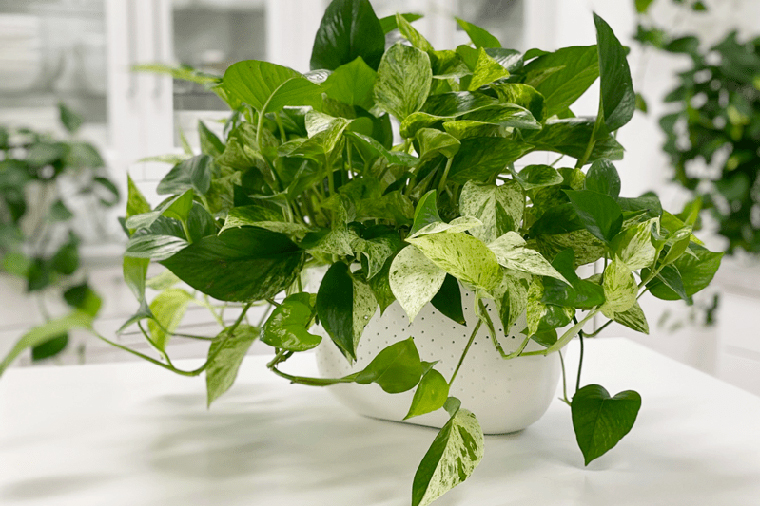All About Pothos
Pothos or Epipremnum aureum, also known as devil’s ivy or devil’s vine, is a species native to the temperate climate of French Polynesia. Over the years it has become naturalized in tropical and subtropical forests worldwide. However, in our climate, it is best known as one of the most common houseplants due to their ease of care, especially for beginners.

Golden Pothos
The most common variety of pothos, has a yellow gold variegation.
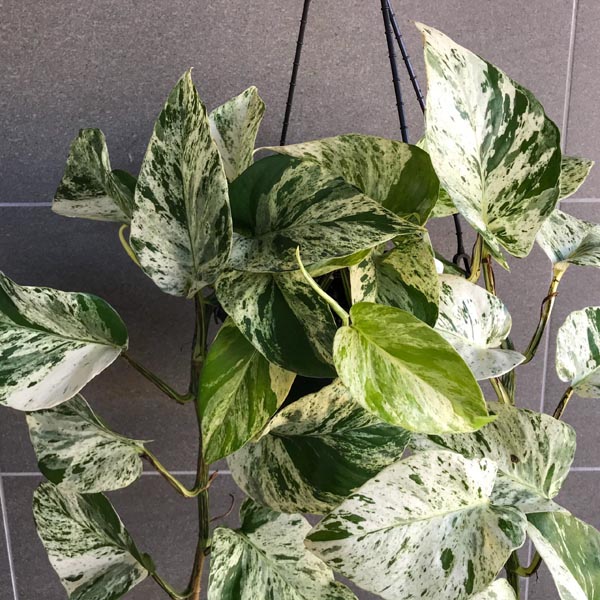
Queen Marble Pothos
Features a marbling of white and cream varigation.
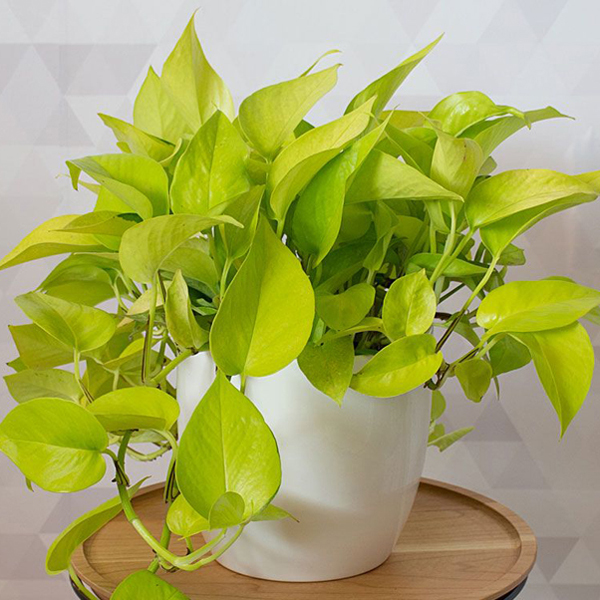
Neon Pothos
Has a bright yellow foliage, that darkens with age.
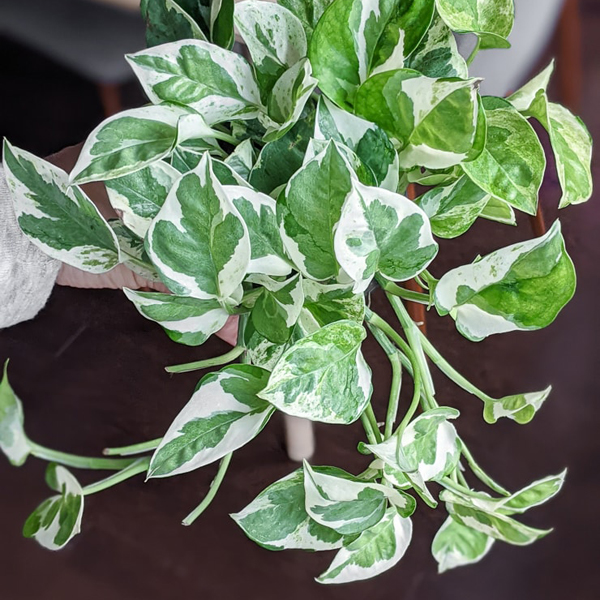
Pearls and Jade Pothos
Features leaves with sections of white and dark green.
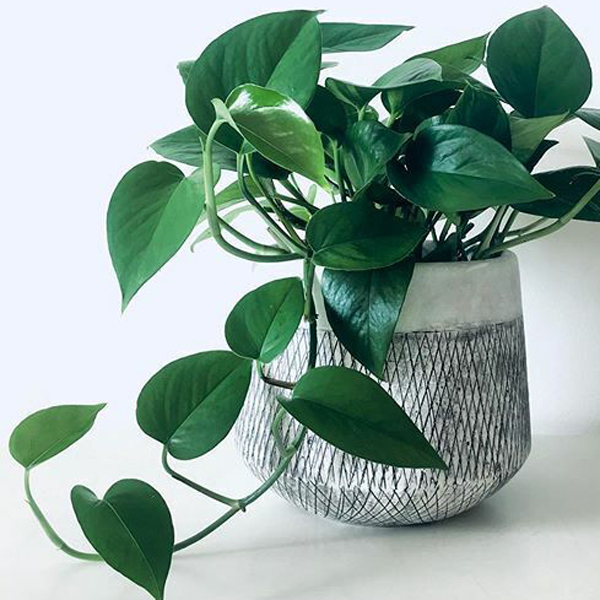
Jade Pothos
Has deep green foliage with no variegation.
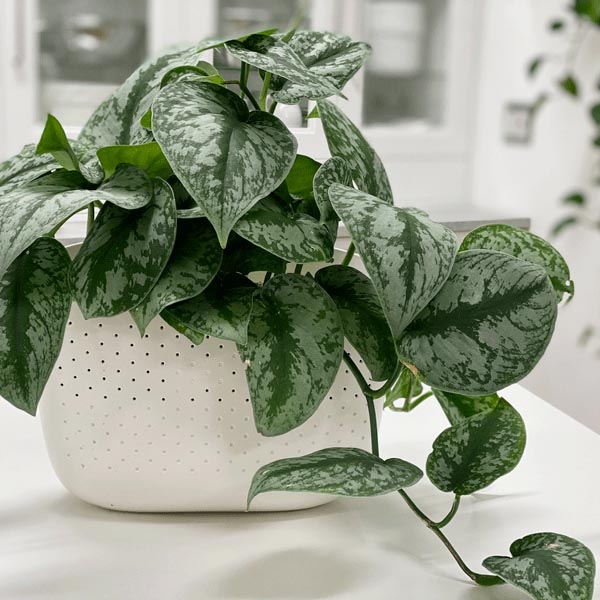
Satin Pothos
Dark green leaves with distinct white markings. Leaves are thicker with a softer texture.
Plant Care
Light
Select a place that gets bright, indirect light. Don’t let their waxy foliage fool you. They will grow in lower light situations but they may be elongated and have lesser variegation.
Water
Water every 1-2 weeks, and allow the soil to dry in between waterings.
Humidity
Pothos do not have a higher humidity requirement and will thrive in your household humidity.
Temperature
They prefer between 18-30C, cold temperatures can cause damage to pothos.
Toxicity
Pothos is considered to be toxic to both cats and dogs. It can irritate the mouth and tongue as well as cause vomiting, increased salivation, and swallowing difficulties.
Plant Problems
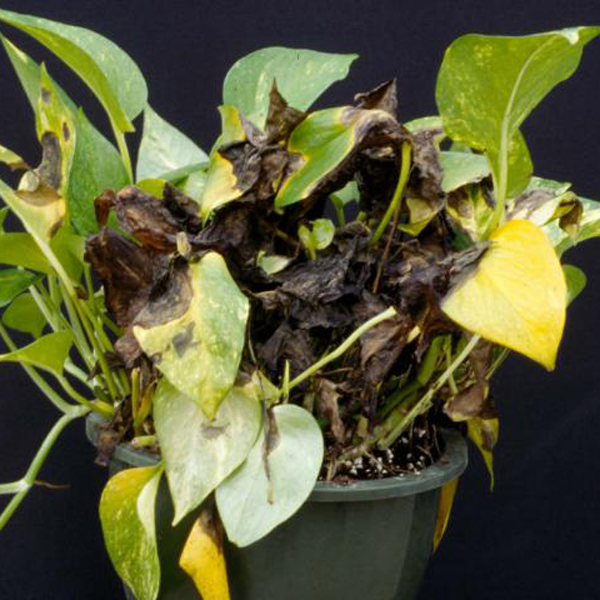
Root Rot
Root rot occurs when the plant has been overwatered and the roots are not able to properly dry out between waterings. Systems typically include wilting leaves and mushy stems. To prevent root rot use an appropriate soil substrate, ensure your pots have adequate drainage, and do not plant in a pot too large for the plant. If mild, root rot can be treated by letting the plant dry out on its own. If severe, remove your plant from the soil, cut off any damaged roots and repot in a dry medium.

Lost Variegation
If your pothos had variegation but the new growth is not variegated, it is likely not in a bright enough location. As variegated leaves cannot produce the same amount of energy as green leaves, only when the plant is in a well-lit location will the variegation increase. This is particularly true for white variegation as any white portion of the leaf cannot produce energy at all.
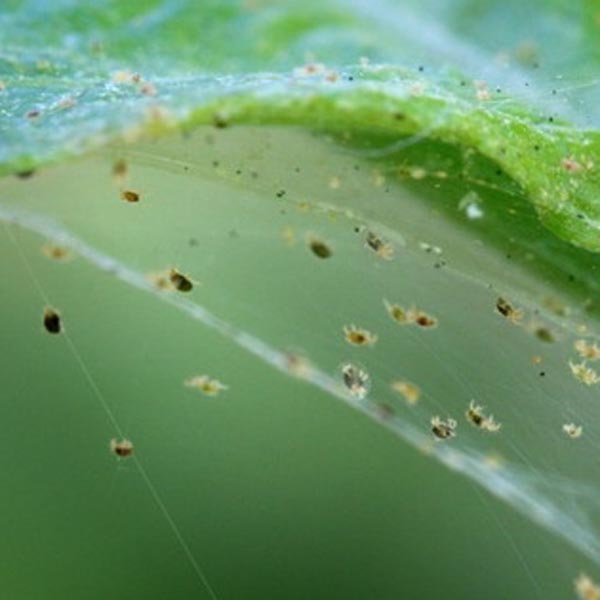
Spider Mites
Spider mites are tiny insects that create webbing typically between the leaves and stems of a plant. They can be treated with insecticidal soap such as End-All or a horticultural oil such as neem oil.
 |
| 
